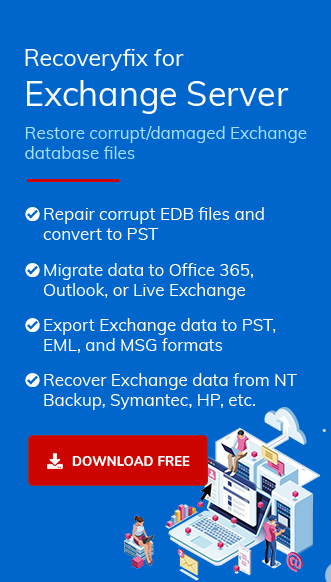Organizations are using Exchange Server to manage their day-to-day operations, internal communications, and other daily activities. Many activities going on within one server often increases the load on the server, which results in errors. “Content index state is failed and suspended”. It is one such error that can affect the users accessing Exchange via OWA. It doesn’t impact the accessibility of the Exchange Server.
However, it impacts the functionality of Database Availability Group (DAG) in Exchange Server infrastructure. If users report an error that they cannot search on their mailboxes, it is important to identify the issue by checking the mailbox database copy status. You can use Exchange PowerShell cmdlet in the Exchange Management Shell (EMS) to determine the issue.
Open EMS and run the below cmdlet to check the content index state:
Select Name,*index*
You’ll get accurate results for the content index on running the command, whether it’s failed or suspended. You can run the cmdlet for more than one content index. As an administrator, you can use the Exchange Management Shell to bring the content index in a healthy state again.
Methods to fix the content Index Failed error
There are two cases in which you can use the PowerShell cmdlets to fix or repair the failed database content index state.
Scenario 1: When Exchange is not a part of Database Availability Group (DAG)
When Exchange is a member of DAG, it has multiple database copies that can be affected or not affected by a corrupt content index state. To resolve the error in this situation, follow the below steps:
- To analyze which content indexes are affected and display the failed or suspended status, run the following command in EMS:
- Fix the corrupt catalog of the affected database with the below command:
- Run the following command to see the status to find out whether the command was successful in repairing the files or not.
Enter the database name in the format Database\Server and the source server name. Depending on the size of the database, the update will be finished.
If it displays a healthy state, the error has been fixed and you can search the mailboxes in Exchange Server.
Scenario 2: When Exchange is not a part of DAG
In this scenario, a single database copy includes the failed or corrupt database content index state. You can make this database healthy again by using the following commands one-by-one.
First of all, stop the Exchange services running in the background – Microsoft Exchange Search and Microsoft Exchange Search Host Controller by executing the below cmdlets, which are native PowerShell commands:
- For Microsoft Exchanges Search service:
- For Microsoft Exchange Search Host Controller Service:
Now, move the location where the Exchange database folder is saved to the same system. Check for the long string GUID folder and delete it completely, along with any subfolders that contain the database’s content index.
- Now, start the above services again by running the simple commands one after another:
- After running the command, it will take some time to create the new database content index within the new long string folder.
- Now, check for the content index state of the Exchange database with the below command:
- It is a time-consuming process if a person is a beginner and unknown to the functioning of the application, and processing the manual process will become problematic because it will take time only to understand the basic requirement/process.
- Data can be lost in one single mistake, which causes a huge blunder that might result in the corruption/deletion of the Exchange original database.
- Because of all these aspects, the technical process is hazardous and uncertain.
The content index will be fixed after following the above solution, and you’ll be able to use Exchange services and functions without any content-related issues. However, Suppose you’re still incapable of fixing the error, it is recommended to use Recoveryfix for Exchange Server Recovery or any third-party software.
Recoveryfix for Exchange Server Recovery is a comprehensive solution that allows you to repair corrupt EDB files and move them to PST, live Exchange, and Office 365 destinations. It is integrated with a simple UI and easy-to-use navigation that helps conduct a smooth recovery from severely corrupt EDB files and retrieves all the data in the best condition. It supports EDB to Office 365 migrations and also helps you recover lost and deleted public folders from Exchange EDB files.


